Do Alpacas Eat Thistles? Exploring Alpaca Dietary Habits and Nutrition
Ever wondered what alpacas munch on in their downtime? You might be surprised to learn that these fluffy creatures have a diverse diet. But do alpacas eat thistles? That’s a question I’ve heard often, and it’s time to clear up the confusion.
Alpacas, native to South America, have adapted to a variety of habitats, each with its unique flora. This adaptability extends to their diet as well. But when it comes to thistles, things get a bit prickly. Let’s dive into the world of alpacas and their dietary preferences.

Understanding what alpacas eat isn’t just interesting, it’s crucial for their care. Whether you’re an alpaca owner, an aspiring owner, or just an animal lover, knowing their dietary habits can be enlightening. So, let’s explore the answer to the question: do alpacas eat thistles?
Key Takeaways
- Alpacas have a diverse diet which predominantly comprises of grass and hay, fulfilling around 80%-90% of their requirements. Grain, fruits and vegetables are also part of their diet but in minimal amounts.
- Alpacas can adapt to varied habitats and can consume a wide range of vegetation, from leaves and wood to bark, stems, and even flowers.
- While alpacas have been observed munching on thistles, it is apparent that the consumption of these spiky plants is more of an adaptive response and not a dietary preference.
- It’s important to maintain a balanced, wholesome diet for alpacas to ensure their health and well-being. While thistles can offer some nutritional benefits, they can also lead to potential oral health concerns due to their tough, spiky form.
- Alpacas have unique dietary needs. They require a protein intake of 10-14%, fiber of 15-35%, Vitamin A from 6,000-10,000 IU/Kg, Vitamin D from 500-800 IU/Kg, Calcium from 1-2%, and Phosphorus from 0.4%-0.8%.
- While alpacas can eat thistles, it should not be their primary source of nutrition. Thistles can provide them with a good intake of fiber and protein, but a balanced mix of other plants will better cater to their nutritional needs.
Alpacas: A Look into Their Diet
having a comprehensive understanding of alpaca’s dietary habits is crucial not just for alpaca owners but for anyone interested in these fascinating creatures. After all, food consumption directly impacts health and overall quality of life, even in humans.
So, what exactly does an alpaca’s diet consist of? Their nutrition predominantly includes grass and hay, fulfilling around 80% to 90% of their requirements. Grain can be added to their diet but it should make up no more than 20% of their total intake. An occasional treat of fruits or vegetables won’t go amiss either, however they should not form a significant part of an alpaca’s diet.
Here’s a breakdown of the typical diet of an alpaca:
| Food Source | Percentage of Diet |
|---|---|
| Grass and Hay | 80%-90% |
| Grain | Up to 20% |
| Fruits and Vegetables | Minimal (Treat Basis) |
It’s worth mentioning that these animals have an impressive ability to adapt to diverse habitats and can feed on a wide range of vegetation. This includes leaves, wood, bark, stems, and even flowers. This adaptability has allowed wild alpacas to thrive in harsh environments of the Andes Mountains in South America. However, while thistles are common in various parts of the world, the question arises – “Do alpacas eat thistles?”
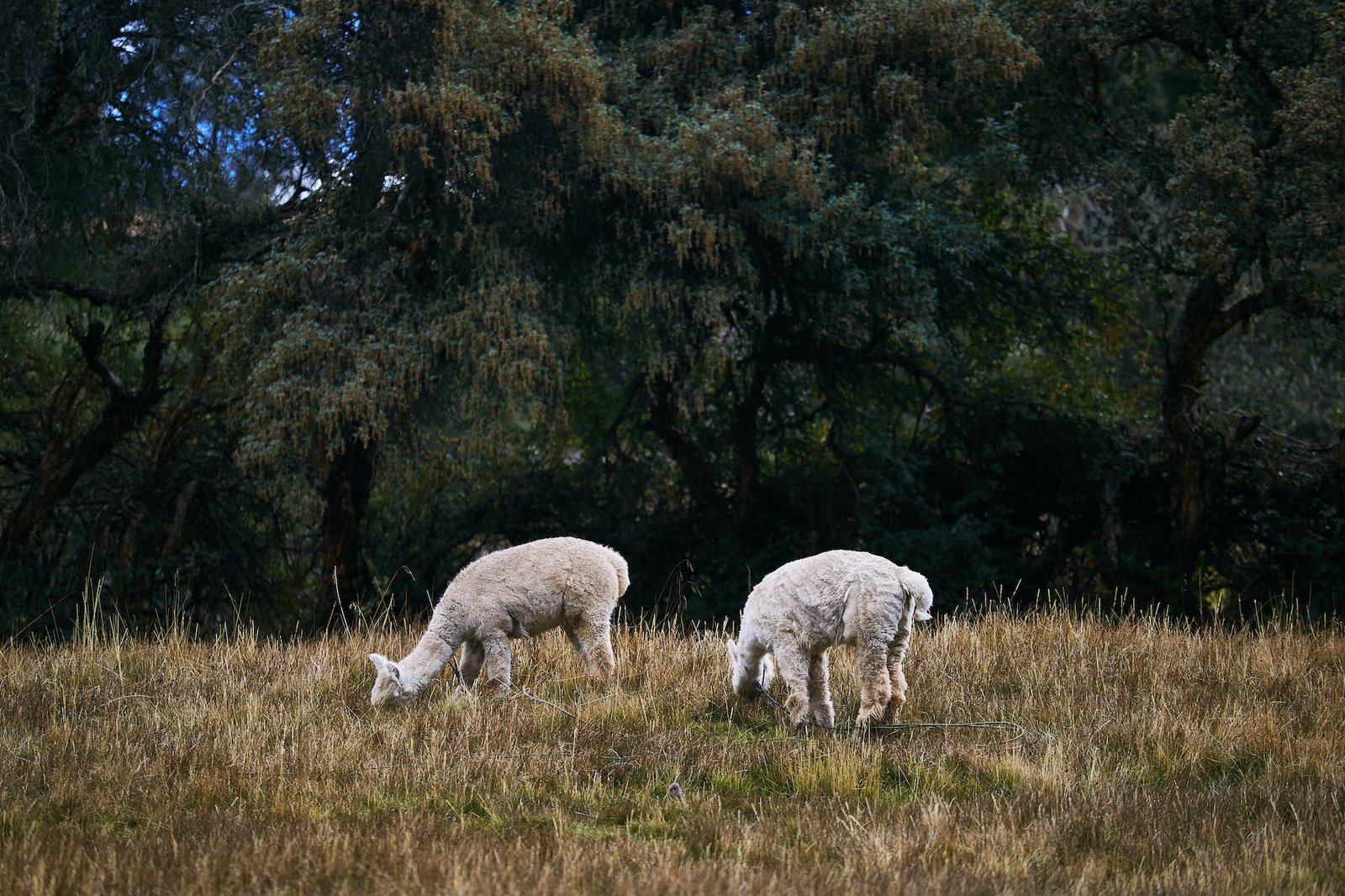
As previously mentioned these curious creatures do have a diverse diet, but thistles do get more complex. Thistles are known to have a spiny nature, which has led many to wonder if alpacas consume them. We’ll delve more into the relationship between alpacas and thistles in the following section. Get ready to uncover some surprising facts about their food preferences. Note, anyone involved in alpaca care or those considering adopting an alpaca ought to pay careful attention here. Beware, it’s not as straightforward as it may seem.
The Adaptability of Alpacas
One of the impressive traits of alpacas is their remarkable adaptability. These animals have been known to thrive in a wide variety of habitats, from mountainous regions of Peru to the flat plains of Australia. Alpacas are indeed versatile grazers.
Given their ability to graze in various kinds of environment, it’s not surprising that their diet isn’t limited to just pasture. Alpacas are keen on a multitude of plant species, like green leaves, wood, bark, and stems. They even have a penchant for flowers. Their wide-ranging diet allows them to adapt to almost any habitat where they can find a diverse array of plant life.
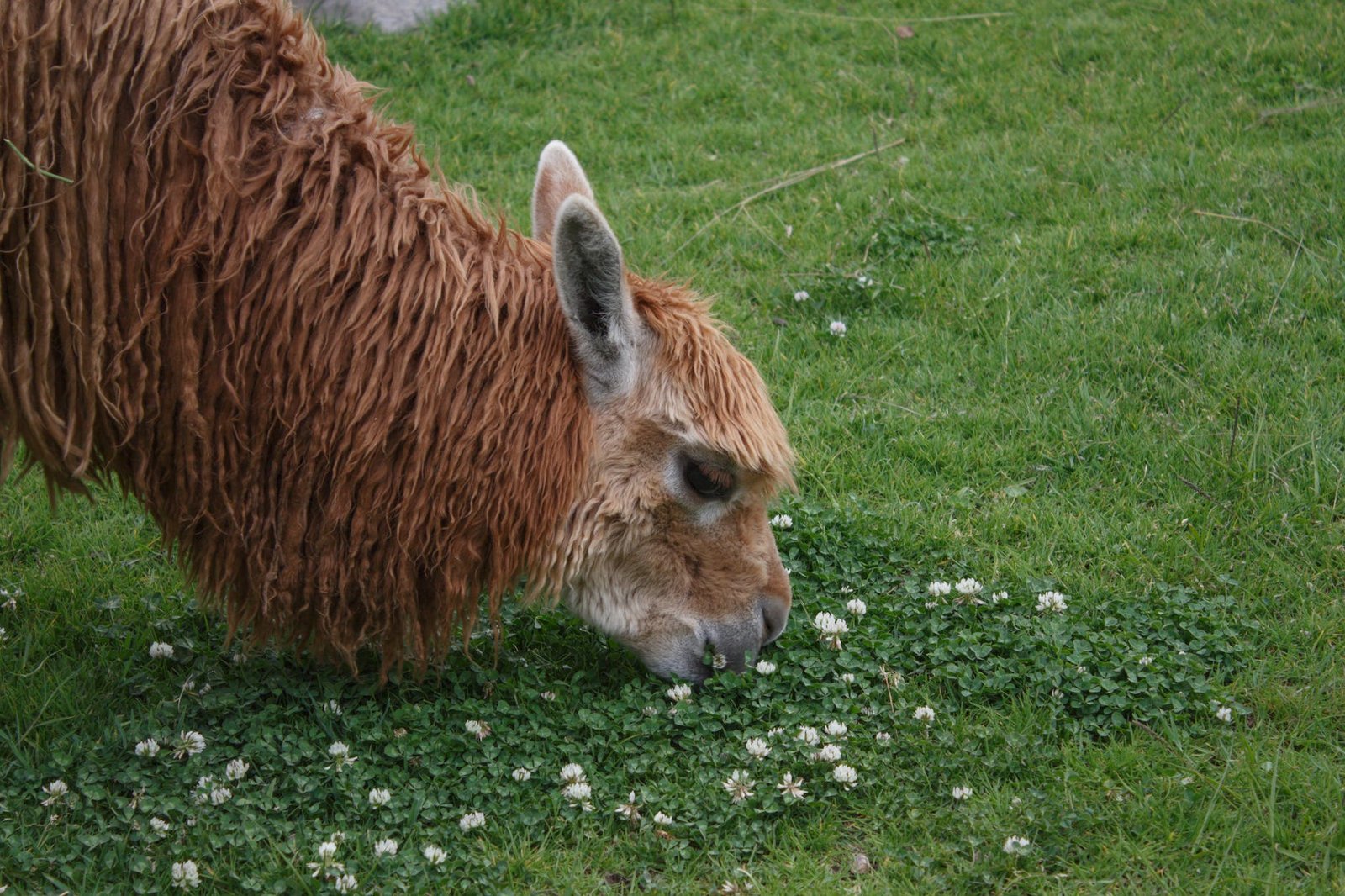
Moving onto thistles, anyone who has ever tried to pull one out of the ground surely knows their spikey nature. Thistles are usually considered a weed, and many grazing animals avoid them due to their spiky exterior.
Yet, some owners have reported their alpacas munching on thistles. While it seems odd to us, these hardy creatures seem to handle the prickly plants better than expected. Is this a common phenomenon or just some exceptional cases?
The complex relationship between alpacas and thistles brings up an important question, “Do alpacas eat thistles?” To answer this, let’s delve into the thistle-alpaca interaction in more detail. However, consider this food for thought: just because alpacas can eat something doesn’t mean they should.
Bear in mind, a balanced and nutritious diet is paramount for any animal, and alpacas are no exception. Feeding them with what is optimal for their health, growth, and productivity should always be a priority for those who care for these unique and adaptable creatures.
Thistles: A Thorny Topic for Alpacas
Unraveling the seemingly complex relationship between alpacas and thistles can be a bit challenging. The sharp, spiky nature of thistles may not seem appealing to many animals but alpacas have been observed to consume them from time to time. Now, that raises the question, is it normal for an alpaca to eat thistles?
A primary consideration to factor in when examining animals’ eating habits is their adaptability. Alpacas have proven to be highly adaptable creatures with a flexible dietary regimen that comprises not only green leaves, wood, stems, bark, and flowers, but also thistles under certain circumstances. Yet, this does not constitute an endorsement of a thistle-rich diet for our fluffy friends.
Thistle consumption in alpacas seems more contextual than commonplace. Alpacas might turn to these spiky plants out of necessity rather than preference, especially in habitats where forage options might be scarcer or less varied. But thistles should not be misunderstood as regular or desirable elements of an alpaca’s diet.
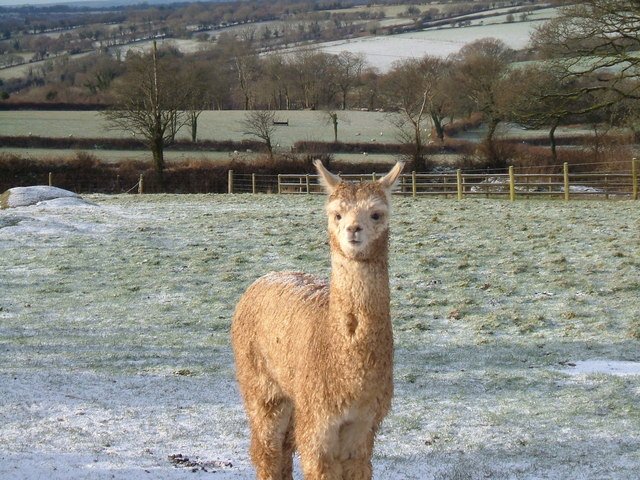
When considering the long-term health and wellbeing of alpacas, it’s essential to ensure they receive a balanced, nutritious diet. While thistles may offer some nutritional benefits, their tough, spiky form can lead to potential oral health concerns for alpacas. Proper monitoring of their dietary habits can mitigate these risks.
Alpacas’ ability to consume a wide variety of plant species makes them remarkably adaptable to different habitats. But this also means they require appropriate nutritional management and careful supervision to maintain optimum health.
Looking deeper into the curious case of the alpacas and thistles, one can appreciate the adaptable nature of their dietary habits. However, thistle intake should be observed as an adaptive response rather than a dietary preference. And so, the saga continues, the thistle: a truly thorny topic for alpacas.
The Diversity of Alpacas’ Dietary Preferences
Alpacas, just like us, show a preference for some foods over others. What tickles their taste buds can vary greatly; yet, it’s critical to remember that certain choices aren’t always the best for their health. It’s especially true with thistles, which appear on the field-to-fork menu despite their prickly exterior.
Surprisingly, I’ve noted many instances of alpacas feasting on these spiky plants. This could be because thistles, rich in fiber and protein, provide some of the nutrients alpacas need. In nature, alpacas may gravitate toward thistles if their regular food sources are scarce. However, while they’re equipped to navigate their spiny defenses, an all-thistle diet isn’t nutritionally balanced or particularly pleasant for these furry grazers.
| Food | Nutrient Value |
|---|---|
| Thistle | High fiber, protein |
| Regular Diet (grasses/leaves) | Balanced nutrients |
The natural diet of alpacas consists mostly of grasses, leaves, and sometimes small twigs. Their digestive system is brilliantly adapted to extract the maximum goodness from these foods. In a perfect world, it’s what they should eat. They even have three stomachs to aid in digestion, a unique feature that helps them extract as much nutrition as possible from the low-energy foods that constitute the bulk of their natural diet.
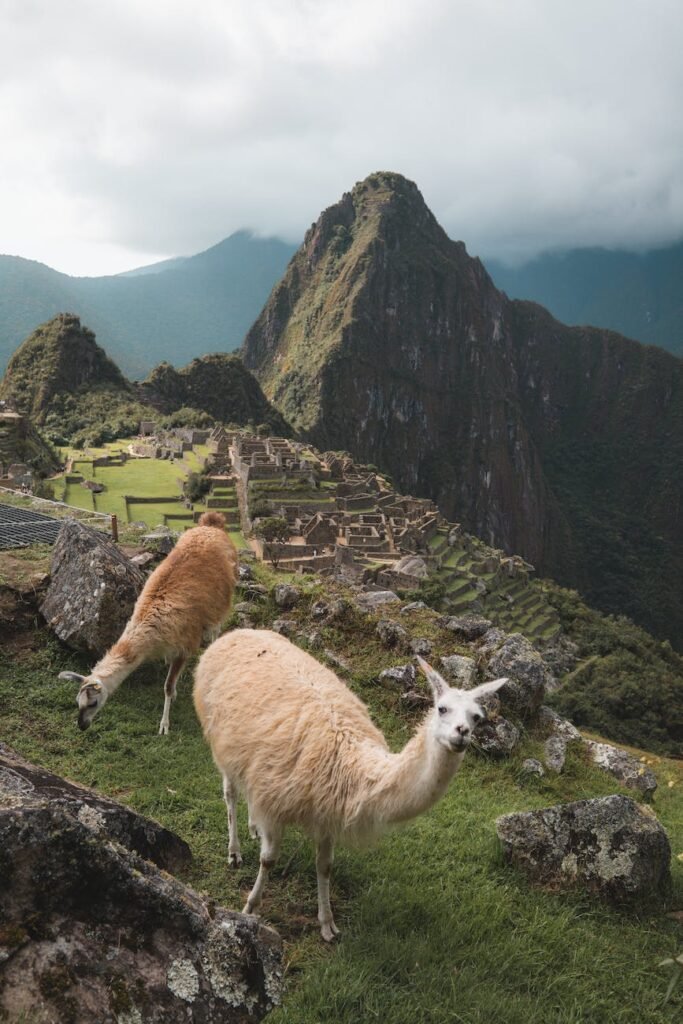
Yet, the world of alpacas is not always perfect. They can become adventurous and experimental with their food choices. It’s where we notice them munching on thistles, braving the spikes for some crunchiness in their diet. While it may be somewhat entertaining to watch, remember that an alpaca’s well-being can hang in the balance.
Regular monitoring of their diets and timely intervention can lead to healthier, happier alpacas. Brushing the fields of thistles and replacing them with a balanced mix of plants can indeed be an effective way to manage their dietary habits, steering clear of potential oral health concerns. So, while thistle consumption may be seen in alpacas, it’s an anomaly rather than the norm, and not something that should necessarily be encouraged.
This journey to understand their dietary preferences reinforces the understanding: alpacas are certainly adaptable. However, adaptability shouldn’t be confused with preference, and that’s a key take-away here.
Understanding Alpacas’ Dietary Habits
As an alpaca whisperer with years of dives into the world of these creatures, it’s fascinating to observe their eating habits. They remember, being vigilant about what they eat is crucial for the maintenance of their health.
Though they’re often seen munching on thistles, it shouldn’t be misconstrued that it’s their preferred choice of feed. In reality, alpacas are grazers who normally feast on a diet rich in native grasses, a pattern akin to many ruminants. Hence, their diet demands a balanced supplement of roughage, vitamins, protein, and minerals.
Alpacas, unlike other livestock, have a unique digestive system that allows them to utilize their food efficiently. They possess a three-compartment stomach where each segment plays a vital role in the digestion process. The first section rehydrates the food, the second breaks down the fibers, and the third carries out the final phase of digestion.
When it comes to feeding alpacas, the key lies in providing them a wide range of variety. By doing so, these intelligent creatures are able to pick and choose nutrients according to their varying needs. This will mitigate the need for them to consume thistles when food is scarce.
Here’s a quick rundown of their dietary needs:
| Nutrient | Requirement |
|---|---|
| Protein | 10-14% |
| Fiber | 15-35% |
| Vitamin A | 6,000-10,000 IU/Kg |
| Vitamin D | 500-800 IU/Kg |
| Calcium | 1-2% |
| Phosphorus | 0.4-0.8% |
Finally, it must be remembered that while alpacas can eat thistles as a part of their diet, it should not be their primary source of nutrition. This does not mean they should be completely deprived of thistles. Thistles, while a bit unorthodox, do provide them a good intake of fiber and protein. However, a balanced mix of other plants will better cater to their nutritional needs.
Monitoring these gentle grazers’ dietary habits is essential. However, keep in mind, their dietary selections may not reflect the optimal feed for their health. It is crucial to keep their dietary habits in check to ensure they are receiving the right amount of nutrients.



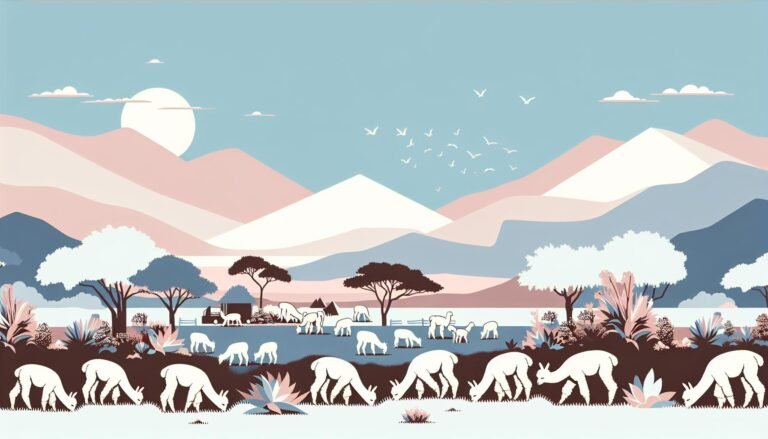
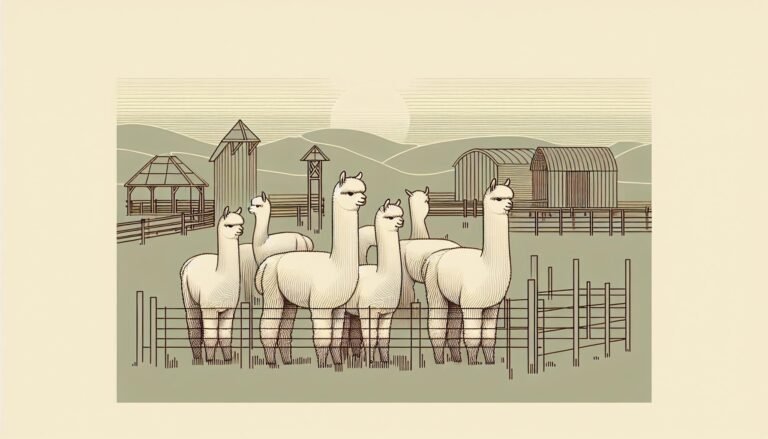



One Comment
Our picks
Alpaca & Wool Felted Sole Inserts: Comfy Upgrade?
Best Alpaca Socks for Hiking: Ultimate Comfort and Durability on Trails
Best Alpaca Halter for Comfort and Control